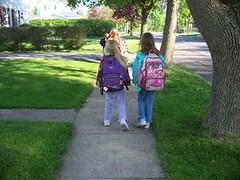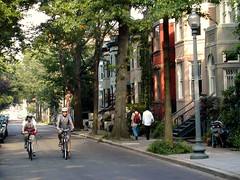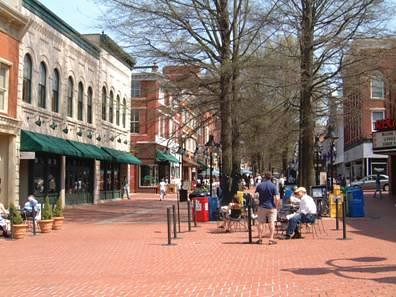Discover your neighborhood’s walkability score!

Posted December 4, 2007 at 6:59PM
It couldn’t be easier: just enter the address, click the button, and up pops your score on a scale of 1-100. See if your score is better than that of your friends or competitors, and then brag about it – it’s the American way! And it’s fun, besides.
 Using the growing body of geographic data imbedded in Google Maps, a new web site has emerged to help real estate agents and prospective property owners and tenants to determine how accessible any given location is. In particular, it internally calculates the distances to a range of important and useful services and amenities such as stores, schools, parks, and restaurants, and then combines the data into a single “walk score.”
Using the growing body of geographic data imbedded in Google Maps, a new web site has emerged to help real estate agents and prospective property owners and tenants to determine how accessible any given location is. In particular, it internally calculates the distances to a range of important and useful services and amenities such as stores, schools, parks, and restaurants, and then combines the data into a single “walk score.”
Just for fun, I entered the addresses of NRDC’s four large offices in New York, Washington, San Francisco and Santa Monica. We’re awesomely located, with walk scores of 100, 98, 98, and 97, respectively. My home, in a more residential area, still does pretty darn well with a 72 (“very walkable” under the system’s scale), but my in-laws don’t fare so well with a 43 (“not walkable”).
Check it out for yourself.
Now I should note, as the site itself does, that the score has limitations. Proximity to services and amenities, while essential, is not the only important characteristic of a great walkable neighborhood. Other important ones that the walk score site doesn’t capture but the LEED for Neighborhood Development rating system does include sidewalks, safe driving speeds, pedestrian-friendly building entrances and windows, reasonable block lengths and, as I discussed in an earlier post, street trees. One that might not be intuitive to people (it wasn’t to me when I first began studying this field) is the presence of on-street parking; it creates a feeling of safety for walkers because it separates them from moving traffic. Here’s a dramatic contrast between a good and not-so-good walking environment:
LEED-ND values walkability very highly in its rating criteria, which combine locational, design, and green technology features in a comprehensive, technically precise system designed to identify and reward true smart growth. If you’re interested, visit the system’s technical criteria and look at “neighborhood pattern and design” credits 2 (p.54), 7 (p.65), and 8 (p.69).
 Finally, one of the country’s top real estate analysts, Chris Leinberger at the Brookings Institution, has recently published a survey of good walkable environments in the top 30 US metropolitan areas, and ranked the metro areas according to the number of such places they provide per capita. Chris ranks Washington, DC at the top, on the strength of its downtown and 20 other highly walkable city and suburban neighborhoods, from DuPont Circle in town to Reston Town Center in suburban Virginia. Interestingly, Chris points out that, 20 years ago, only the Georgetown and Old Town Alexandria neighborhoods would have qualified in the DC metro area. We’re moving in the right direction.
Finally, one of the country’s top real estate analysts, Chris Leinberger at the Brookings Institution, has recently published a survey of good walkable environments in the top 30 US metropolitan areas, and ranked the metro areas according to the number of such places they provide per capita. Chris ranks Washington, DC at the top, on the strength of its downtown and 20 other highly walkable city and suburban neighborhoods, from DuPont Circle in town to Reston Town Center in suburban Virginia. Interestingly, Chris points out that, 20 years ago, only the Georgetown and Old Town Alexandria neighborhoods would have qualified in the DC metro area. We’re moving in the right direction.
Thanks to my NRDC colleague Rachel Sohmer for pointing me to Chris's report. Other metro areas in the top five include Boston, San Francisco, Denver (that one surprises me), and Portland. New York snobs take note: you’re only number ten. :)

